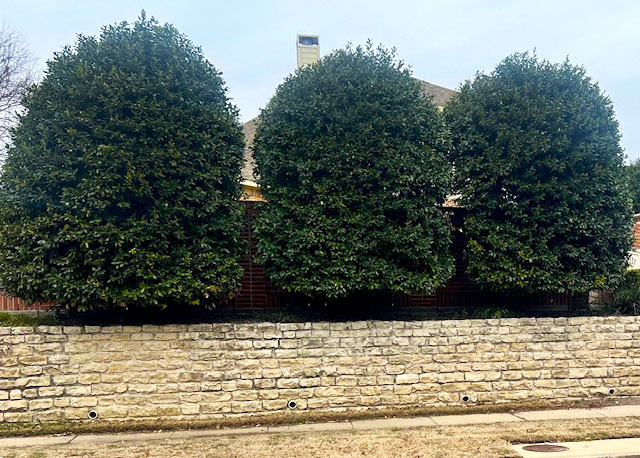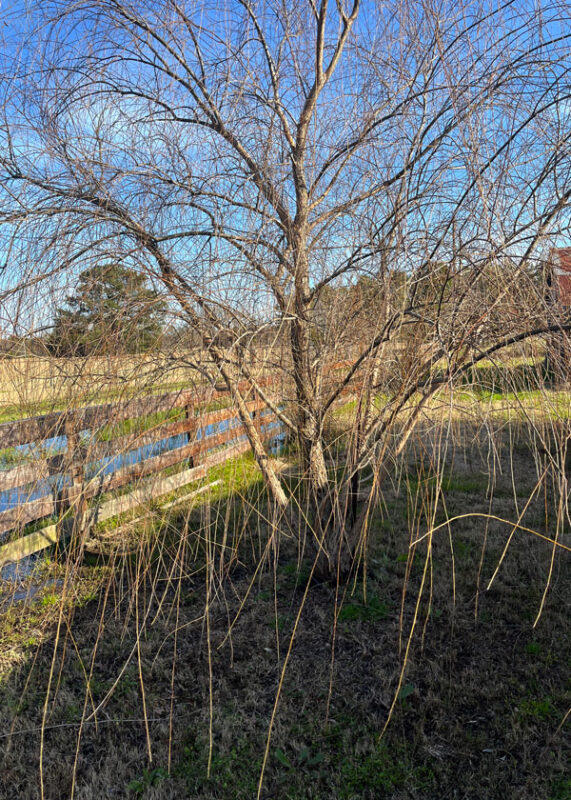Q&A – Ask Neil: February 27, 2025
(Please read these instructions carefully.)
Before you post your question, please look at recent issues to see if someone else has already asked it. You might find your answer there.
How to submit your question…
(Note: You may need to allow a pop-up window to come up in order to get the link for sending your photo(s). If you have already submitted your question and didn’t see the pop-up window, please click here.)
• Click the link provided below to post your question. After you submit your question, a new window will pop up giving you the address to which you can e-mail a SHARP, HIGH-RESOLUTION PHOTO to accompany your question. Please DO NOT SEND THUMBNAIL PHOTOS in case I need to zoom in to see things.
• Click here to post your question.
• Please ONLY POST YOUR QUESTION ONE TIME. We can only accept a set number of questions each week, and when we get duplicates it costs other people their chances.
• One question per reader, please.
• Please use this only for posting questions – not for standard emails.
• Watch for your answer in the following week’s e-gardens.
• I choose those of greatest general interest. For example, plant IDs seldom make the cut.
• I must have your first name or initials.
• I must have your city or county. (Texas is a very large state.)
QUESTION 1
WHAT IS WRONG WITH THIS PINE TREE?
Question: I have a sad pine tree. The other two are fine. This one has always been different. The other two were labeled as “Loblolly pine.” This one was labeled as “Loblolly/slash pine.” It has been treated with Azomote, sulfur and iron, and fireplace ashes. Nothing has helped. Please advise. Sondra, Coppell, Dallas County.
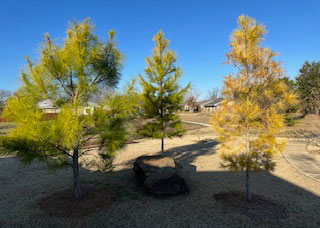
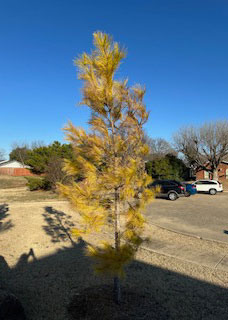
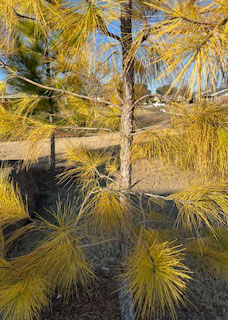
Answer: As you drive around your neighborhood and beyond into nearby towns, please note how few attractive pines you see that are 15 ft. tall and taller. Most soils in Dallas County are very alkaline black clays (quite unfavorable for loblolly and slash pines). Adding to that, irrigation water from DFW-area lakes is even more alkaline. Iron becomes insoluble under those conditions and, since it is important in the production of chlorophyll (green pigment in plant leaves that is responsible for photosynthesis), these pines begin to turn yellow several years after planting. Not to sound like the prophet of doom, but it’s highly possible that the other two will begin to follow suit within a year or two.
As to the things you have added, I assume you’re talking about the trace element supplement Azomite. Even if it were to supply iron, that iron would be rendered insoluble by the alkaline irrigation water and possibly your native soil. (Coppell has both black clay soil and red, sandy loam that is neutral or slightly acidic.) The addition of iron and sulfur soil acidifier, in my 54 years of experience of living in the Metroplex, is insufficient to correct the problems. Fireplace ashes are extremely alkaline, so adding them around your yellowed pine merely makes the problem worse in a hurry.
All of which is to say that it’s going to be difficult to change the course of the yellowing. I decided 30 or more years ago that I would be doing my readers and listeners a disservice to encourage them to add iron and sulfur. Those same dollars would be better spent on buying replacement trees. I know that’s not the answer you wanted, but it’s the only one with which I’m comfortable.
QUESTION 2
WHAT IS THE BEST TURF FOR THE HILL COUNTRY FOR FULL SUN AND PART SHADE?
Question: We recently moved to the Hill Country west of Ingram. We need to sod a portion of the yard for the dogs. TifTuf has been recommended. Is that a good choice, or do you have a better recommendation? We have shade from pecans and oaks, but also full sun. Tom S., Kerr County.
Answer: TifTuf should be a good choice for the full sun. It was a collaborative development of Texas A&M, North Carolina State, Oklahoma State, and the University of Florida. Drought tolerance was a main consideration in its selection. Here is the website for the grass along with sourcing information at the bottom of the home page.
As to the shade areas, no bermuda is going to be very tolerant of shade. Be cautious as you plant near your pecan and oak trees. Unless it receives 7 or 8 hours of direct sunlight daily the sod is likely to start thinning out almost as soon as it’s laid in place in April or May. Experiment with it before you invest large amounts.
St. Augustine is more tolerant of shade than bermuda, but I know it can show iron deficiency in Hill Country soils. Nonetheless, it might be a better consideration. That comes with a warning, however. St. Augustine is the more dominant of the two grasses. It will grow out into the surrounding bermudagrass, so if you do end up using it in shaded areas, make some provision to divide the two grasses. We used to be able to use MSMA spray to kill St. Augustine without harming the bermuda, but it’s no longer available to consumers. St. Augustine is also not as tolerant of pedestrian traffic such as big-footed, athletic dogs.
QUESTION 3
HOW CAN THESE HOLLIES BE PRUNED SO THE GROUNDCOVER WILL SURVIVE?
Question: We had giant liriope beneath our Nellie R. Stevens hollies when they were much younger/smaller. I know the next week or two are the wrap-up time for pruning the hollies. The liriope has died out because of the shade, but our arborist has told us it would not be wise to prune the hollies – that it could kill them to reduce their size. I don’t think that’s correct. How much could they be pruned, and is it too late? Lynn B., McKinney.
Answer: These look like they have been quickly pruned with long-bar power hedge trimmers. If they were mine, and if time were not the only/prime factor, I would do the trimming by hand with long-handled loppers. I would try for a more natural look to the plants. That would be a major task for 12 plants, but the results could be excellent. But Nellie R. Stevens hollies will grow right back together, and the pruning will have to be done again every few years.
As to whether this would kill them, heavens no. I remind you of the pruning that was done several years ago to the Willowleaf hollies along the major thoroughfares in Stonebridge Ranch. Those plants were cut back to 15-18 in. and they came back vigorously. I would never suggest that, but I offer it only to point out that it didn’t kill them.
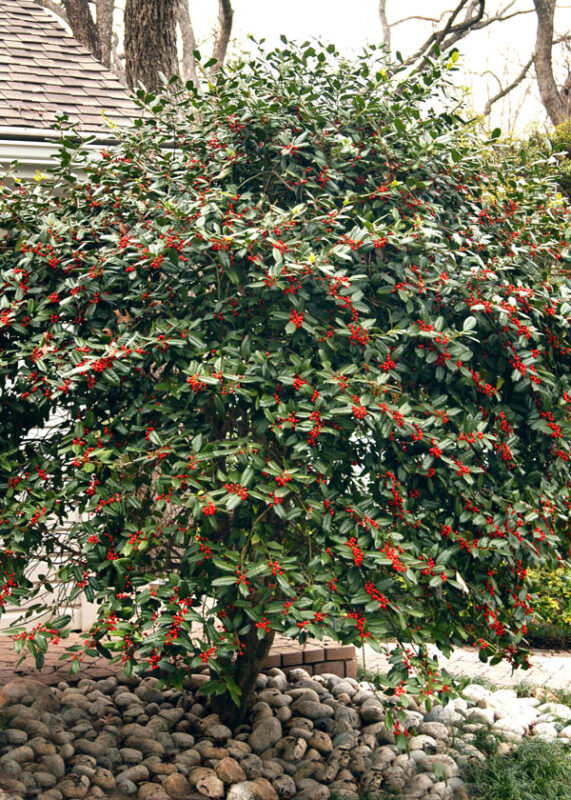
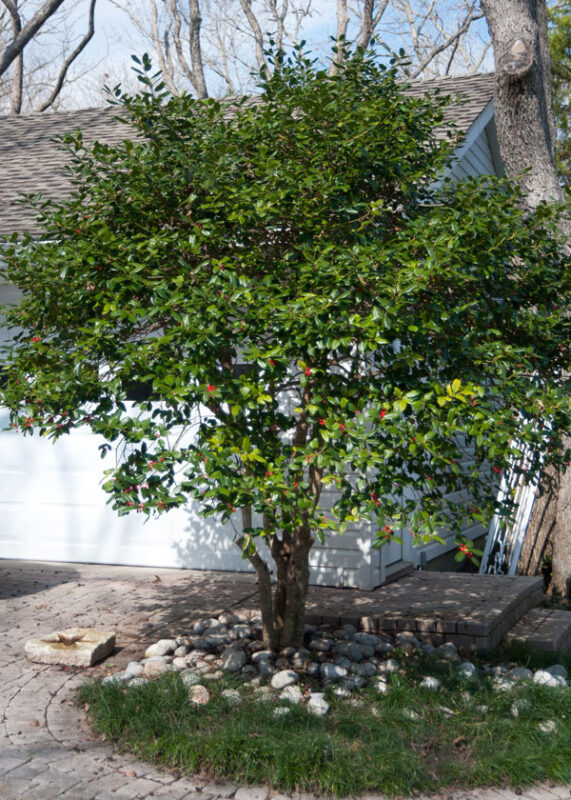
Having said all that, I have another totally different idea having looked at your photo several times over the last several days. Have you considered removing the lower branches and turning these into small trees? That would allow light in beneath the plants and it would also move the canopies up so it wouldn’t infringe on the surrounding walks, streets, etc. It’s a lot of fun to do that and to watch the plants take on entirely new personalities. I’m going to post photos of a Nellie R. Stevens holly in the Sperry home landscape to show you what I’m talking about. Perhaps that’s an idea that might be of interest.
QUESTION 4
CAN PRE-EMERGENT AND POST-EMERGENT FOR WEEDS BE APPLIED AT THE SAME TIME?
Question: Can I apply post-emergent for weeds that I already see and pre-emergent for weeds that I still don’t see at the same time? My nursery gave me a sheet that says I have to apply pre-emergent now, but I already have weeds. Olga G-O, Collin County.
Answer: What you are seeing now is “cool-season” weeds. Those are types that germinated in early fall, grew in fall, over the winter, and then have gone crazy with the first days of spring. Annual bluegrass, rescuegrass, and ryegrass are classic examples, as are dandelions, clover, henbit, chickweed, and plantain.
The pre-emergent weedkillers we apply in early March (in your area) with a repeat application in early June are for “warm-season” weeds that germinate in April, May and into early summer and that produce flowers and seeds over the summer. Crabgrass and grassburs are the prime examples.
I recommend spraying for broadleafed weeds that are currently visible with a broadleafed weedkiller (containing 2,4-D). Most consumer products for pre-emergent purposes are granular.
The easiest way to remember which product to use is that “If you can see a weed, you can’t use a pre-emergent weedkiller at that time to stop it. You’re already too late.”
QUESTION 5
SHOULD I PRUNE MY VARIEGATED VINCA MAJOR?
Question: My variegated Vinca major has taken a beating this winter. Can I prune it? If so, how and when? Mary E., Burkburnett.

Answer: Yes, you can. I would use either a power hedge trimmer or a lawn mower set on the highest setting possible. It will look scalped when you’re finished, but follow it up with a high-nitrogen fertilizer, deep watering, and a couple weeks’ time. It will bounce back really quickly this spring. Honestly, I’m amazed this doesn’t happen every winter as cold as Wichita County gets. I watched your temperatures last week and my heart went to you and your landscapes along the Red River.
QUESTION 6
SHOULD THIS WILLOW BE PRUNED?
Question: I planted this willow tree 5 years ago. It has never been pruned and is now 30 ft. tall. Should it be pruned? How and when? Sandra T., Palestine.
Answer: First of all, thank you for the wire-sharp photo of great resolution. It makes it so much easier to answer your question. You’ll notice how it holds that resolution even when it’s enlarged compared to other photos here. I hope others will follow suit.
I would remove all the branches lower than the top rail of the fence. Start with the ones that are sprouting out from the ground. Cut them completely out. As you remove the side branches, cut them almost flush with the trunk. Leave only a small section of the branch collar (1/4-in. or so) so the tree can heal quickly.
Please know that willows are highly susceptible to cottonwood borers. They’re large black-and-white beetles that lay their eggs on the surface of the willows’ bark. The larvae develop within the trunks of the trees. In doing so they cut off the flow of water and nutrients to the leaves. Willows have short life expectancies. Unfortunately, there isn’t anything you can do to prevent or control cottonwood borers. They’re just part of the business of having willows and cottonwoods in our landscapes. I wanted you to be warned ahead of time.

